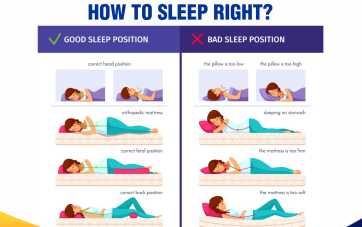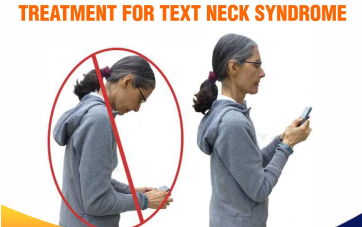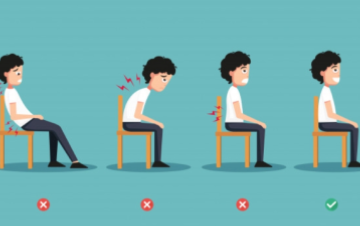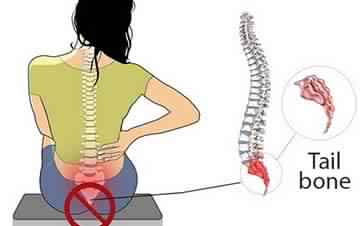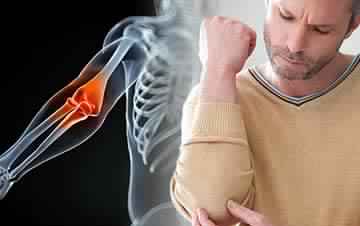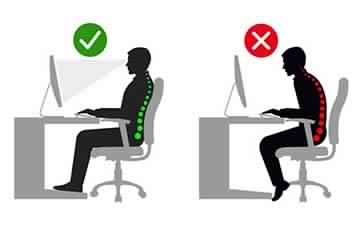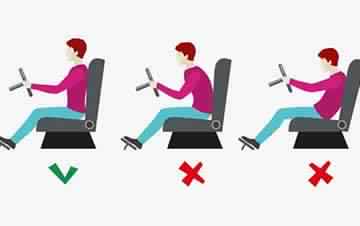LOW BACK PAIN TREATMENT IN JAIPUR
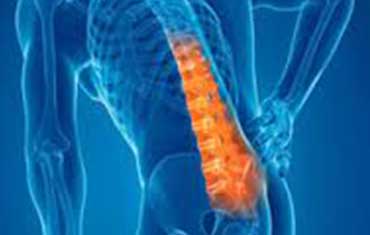
Back pain is a very common painful condition, by which 60-70% of the world suffers at least once in their lifetime. Most of the cases are self-limiting and get relieved on their own. But in some cases, medical advice from Pain medicine or spine specialists is needed for the treatment of Back Pain. Pain in the lower
back can be a result of conditions affecting the bony lumbar spine, intervertebral discs (discs between the vertebrae), ligaments around the spine and discs, spinal cord and nerves, muscles of the low back, internal organs of the pelvis and abdomen, and the skin covering the lumbar area and eagerly need the lower back pain specialist.
Few common conditions causing Low back pain are:
1. Lumbar strain OR Lumbago OR Mechanical low back pain (acute, chronic): A lumbar strain is a stretch injury to the ligaments, tendons, and/or muscles of the low back, due to.- Fall or injury.
- Repetitive bending or twisting activities.
- Lifting heavy weight.
- Sitting/standing in abnormal posture.
It is the most common cause of low back pain. Soft-tissue injury is called "acute" if it has been present for days to weeks. If the strain lasts longer than three months, it is referred to as "chronic." Lumbar strain most often occurs in people in their 40s, but it can happen at any age. Back Pain Treatment in Jaipur can be done by Dr. Sanjeev K. Sharma, who is amongst the Best Spine Doctors in Jaipur.
Symptoms:
a. Localized discomfort/ pain/ aching pain in the low back area.b. Back muscle spasm or Back stiffness (Difficulty in bending forwards).
c. Occasional pain going to the buttocks or thigh region.
d. Difficulty in getting up from bed in morning.
e. Pain increases with sitting/standing/working and relief with lying down position.
The diagnosis of lumbar strain is based on the history of injury, the location of the pain, and exclusion of nervous system/ spine nerves injury. Usually, X-ray of spine is only helpful to rule out bone abnormalities. Routinely MRI is not needed. If pain is not relieved on its own or by home remedies in a few days, then patient needs to see a Spine & Pain medicine specialist or best doctor for back pain treatment.
2. Disc Prolapse OR Herniated lumbar disc OR Sciatica OR Lumbar radiculopathy: PIVD (Prolapsed Intervertebral disc)/ Lumbar radiculopathy is nerve irritation that is caused by damage to the discs between the vertebrae. Damage to the disc occurs because of age related degeneration ("wear and tear") of the outer ring of the disc, traumatic injury, or both. As a result, the central softer portion of the disc (Nucleus Pulposus) can rupture (herniate) through the outer ring of the disc and cause compression as well as severe inflammation/ swelling/ irritation of spinal cord or its nerves as they exit the bony spinal column and its treatment is tough process but it can Genuinely treated by Dr. Sanjeev, Specialist of Back pain treatment in Jaipur. "Sciatica" pain of a herniated disc is characterized by sharp current like or sharp shooting pain that starts from the low back/ buttock down the leg, upto foot or calf region. It is due to inflammation/compression of nerves by herniated disc fragments.
Symptoms of sciatica /Disc Prolapse:
a. History of lifting weight/ fall/ spine twisting movement followed by sudden pain in lower back.
b. Sharp shooting or current-like pain radiating down from back or buttock to foot or leg region.
c. Associated numbness, tingling sensation or weakness of foot/ ankle or toes. Sometimes in severe cases, retention of urine/ urinary incontinence and constipation can develop.
d. Pain increases with forward or sideward bending/ sitting/ coughing/ sneezing. Pain relieved with lying down position with legs folded. Sometimes, sciatica pain occurs only during standing or walking, depending upon exact site of nerve root compression.
Diagnosis is mainly done by clinical examination with positive SLR test or dural tension tests. Also MRI spine shows diffuse or posterolateral disc bulge with annular tear and compression over existing or traversing nerve roots. Nerve testing (NCV, EMG) can be done in cases, where peripheral neuropathy is also suspected by spine specialists.
Initially treatment of back pain is conservative management with medicines, rest, postural modification, precautions and exercises/ physiotherapy. But in cases, where pain/ numbness/ weakness is not resolving, advanced interventional pain procedures e.g. transforaminal epidural injections, disc procedures, etc. are indicated.
3. Lumbar canal Stenosis or spinal stenosis:
Any condition that results in abnormal movement or deformity of vertebrae of the lumbar spine can limit the space (encroachment) for the adjacent spinal cord and nerves. As a result, nerves while coming out from the spine get trapped, resulting in compression/swelling over nerves causing sciatica like symptoms in the lower limb. It could be at one level, multiple level; one side or both sides.
Causes of bony encroachment of the spinal nerves include
a. Foraminal narrowing (narrowing of the portal through which the spinal nerve passes from the spinal column) due to herniated disc, facet joint arthropathy or arthritis.
b. Spondylolysis or Spondylolisthesis (slippage of one vertebra relative to another) due to degenerative facet joint arthropathy or pars interarticularis fracture, causing spinal stenosis (compression of the nerve roots or spinal cord by bony spurs or other soft tissues in the spinal canal).
Symptoms:
a. History of back trauma or long-standing back pain.
b. Sciatica pain that radiates down the lower limbs (one or both).
c. Pain increases on standing or walking (Neurogenic claudication); but relieves on sitting or bending forwards.
Diagnosis is by clinical examination and MRI spine findings of spinal stenosis by the best doctor of back pain (lateral recess stenosis, central canal stenosis, foraminal stenosis).
4. Lumbar Facet joint strain or facet joint arthropathy:
Facet joints connect upper and lower lumbar vertebrae and allow limited forward bending and twisting movement. Like other joints, these joints are also prone to strain, injury causing swelling/ inflammation in early cases and arthropathy, osteophytes (degenerative changes), spondylolisthesis, spinal stenosis in long-standing cases.
Acute facet joint strain occurs due to repetitive forward & backward bending with associated twisting movements.
Symptoms are:
a. Dull aching pain in back on one or both side.
b. History of sudden popping sound in back, followed by spine got stuck in flexed position/ inability to return to normal position.
c. Moderate to severe paraspinal spasm present at level of facet joint strain.
d. Pain increases on back and affected side bending; relieves on lying down or sitting position.
Diagnosis is mainly clinical based on history and clinical findings. MRI spine can be done to rule out disc prolapse.
5. Sacro-iliac joint pain:
Sacroiliac joint or SI joint is present on both sides of the gluteal cleft (upper side of buttocks), and is formed by sacral and iliac bones. This joint is mainly cartilaginous in upper 2/3rd part and articular cartilage in lower 1/3rd part.
SI joint strain or Sacroiliac joint strain or dysfunction occurs due to soft tissue injury or strain of multiple ligaments present around the upper part of the joint. Multiple causes of joint strain are abnormal sitting posture or sleeping posture, overuse injury, repetitive spine twisting/bending activities, disc prolapse or trauma.
SI joint arthritis occurs due to inflammation of articular cartilage of lower part of joint, mostly due to rheumatoid arthritis, spondyloarthropathy sPa, ankylosing spondylitis, etc.
Symptoms:
a. History of back pain or previous spine bending or twisting movements.
b. Dull aching pain on lower spine or buttock area, with radiating pain upto back of thigh.
c. Pain increases on sit-to-stand, taking turns in bed, forward bending activities; Pain relieves on standing, walking, lying down position.
Diagnosis is mainly clinical, as most of the time X-ray, MRI scans are normal due to ligament strain. Diagnostic injection of SI Joint is a confirmatory test for sacro-iliac joint involvement by back pain treatment specialist in Jaipur.
6. Coccydynia or Tailbone pain:
The pain occurs in the area of the gluteal cleft, at the lowermost part or tip of spine. Causes of coccydynia are coccyx fracture or dislocation due to fall on buttocks, baby birth, long sitting postures, accident/injury, overweight, etc.
Usually there is inflammation or swelling around coccyx, with oversensitivity of nerves supplying this region (Ganglion impar or Ganglion of walther) causing pain over the whole region at or around anus region but all these problems can be recovered by treatment of back pain.
Symptoms:
a. Dull aching pain, burning pain at or around anus or lowest part/ tip of spine.
b. Pain is worst on sitting down on a hard surface/chair; Moving from sitting to a standing position or standing for long periods; During having sex or pee or passing motions.
d. Difficulty to sleep in a supine position.
e. Difficulty in daily activities, such as driving or bending forwards.
Diagnosis is mainly clinical, as MRI occasionally shows inflammation around coccyx.
Rare causes of Back pain:
1. Tumour or malignancy e.g. multiple myeloma, metastases, spinal cord compression, osteoma, etc.
2. Infection e.g. Discitis, osteomyelitis, TB spine or pott's spine, arachnoiditis, transverse myelitis, etc.
3. Spondyloarthropathies sPa or spine inflammatory arthritis e.g. ankylosing spondylitis, psoriatic arthritis, etc.
4. DISH or Diffuse idiopathic skeletal hyperostosis.
5. Joint laxity
Conditions We Treat
- Headache Treatment
- Neck Pain Treatment
- Facial Pain Treatment
- Shoulder Pain Treatment
- Elbow Pain Treatment
- Wrist or Hand Pain Treatment
- Pain Abdomen Treatment
- Pelvic Pain Treatment
- Upper Back Pain Treatment
- Slip Disc Pain Treatment
- Low Back Pain Treatment
- Knee Pain Treatment
- Heel Pain Treatment
- Neuropathic Pain Treatment
- Sports Injury Treatment
